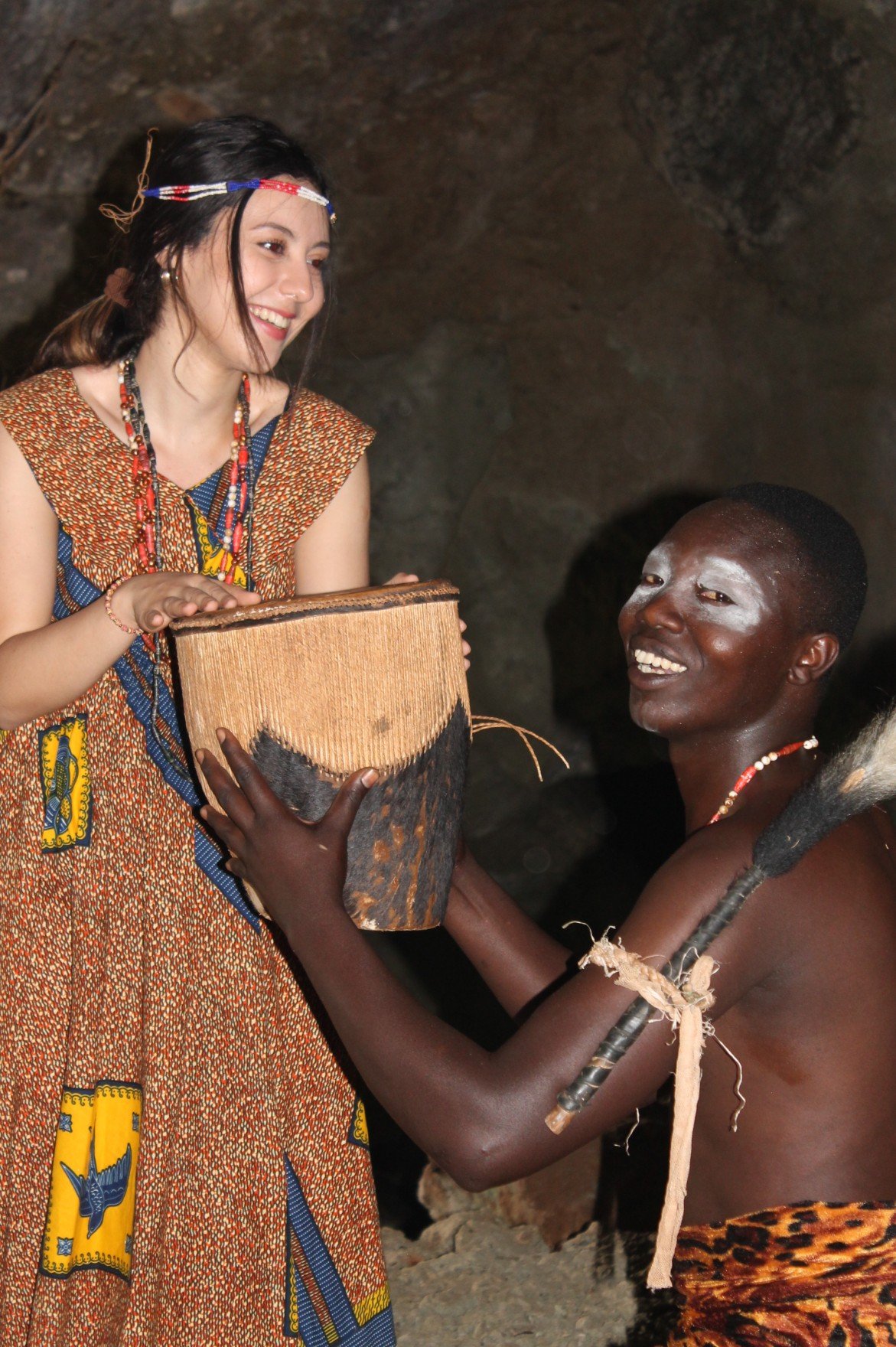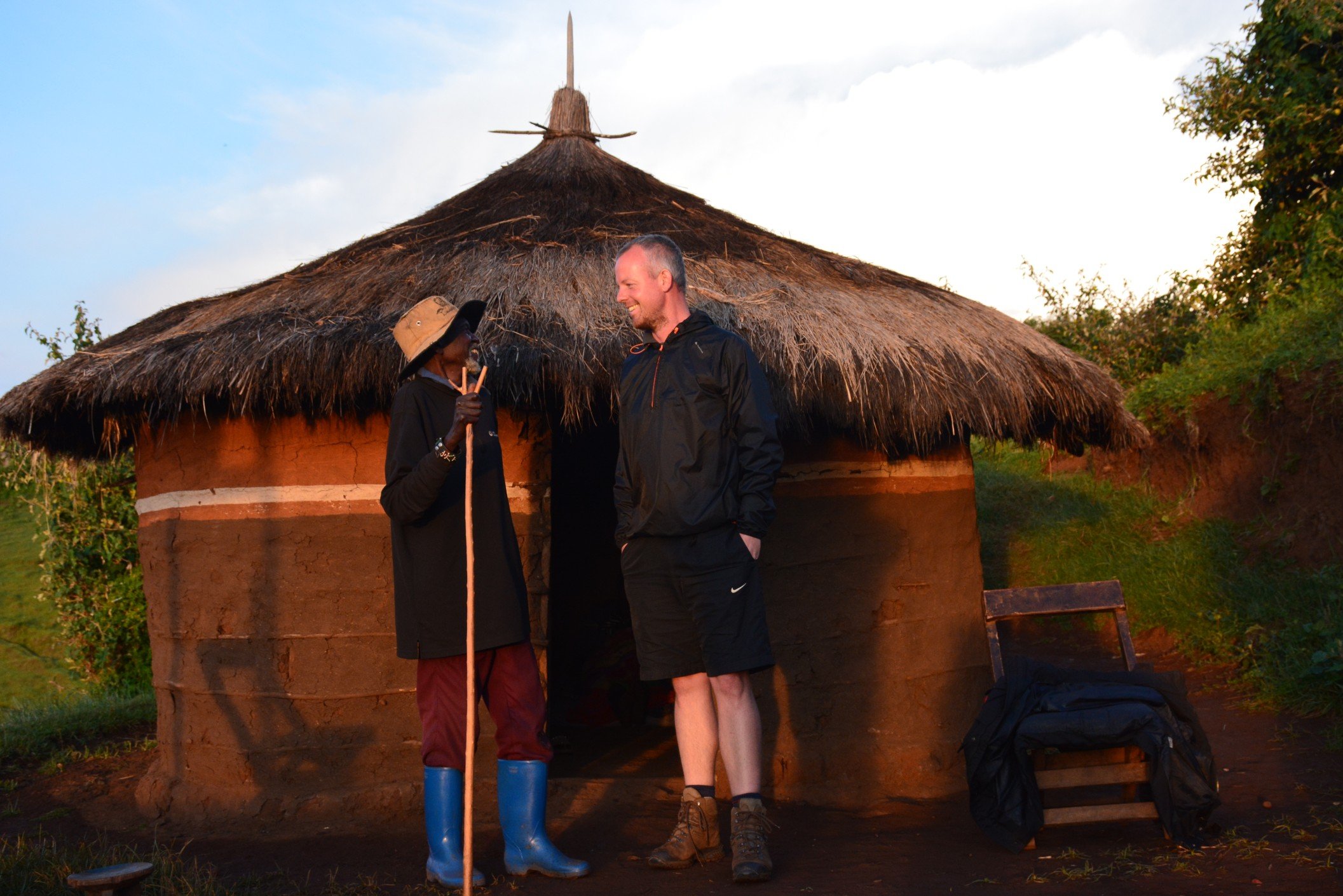History of prophets in Sebei society
It is said that there are three large societies in the world that prophesize: the Jews, the Russians and the Kalenjins. The Sebei people, living on the Ugandan slopes of Mount Elgon, are part of this larger Kalenjin tribe. Who are the prophets – spiritual leaders – of Sebei? In 2018, I interviewed Mzee Mwanga – a Sebei elder – about the history of prophets in his region.
1. Are the prophets still present nowadays?
Mwanga: ‘They are there but silent. Since the introduction of religious activities in Sebei land, the prophets have become less active. The colonial government and churches were advocating for existence after death, through Jesus Christ, and the Muslims through Mohammed. As a result, the work and meaning of prophets has become less significant. Also the system of administration is different from what it used to be. Politicians came to represent the people directly and somehow put aside the prophets.’
Sebei Mama cooking a cave near our Guesthouse, October 2018
2. Before the colonial government and churches came in, what used to be the role of the prophet?
Mwanga: ‘The prophet used to foretell what was going to happen in the future. For example when the Karamajong, Nandis or Pokot (other tribes) would come to raid our cows. Then the Sebei people would prepare their spears and arrows. Sebei people used to hide in caves (like the one we are now seated in) and put up gates to protect themselves. The prophets did also foretell when epidemic diseases would come. Then people would start praying, and would burn offerings such as flowers and crops.’
2a. Important predictions and advice
In his book ‘Culture and behavior of the Sebei’, anthropologist Walter Goldschmidt (1976) explains the role of workoyonytet (prophets) back in the days. Apart from predicting important future events such as cattle raids and droughts, people would ‘seek advice from prophets on diverse matters, such as hunting expeditions and warfare’. Goldschmidt also adds that: ‘the prophet supplied, in a limited way, some of the functional elements of political leadership, utilizing his esoteric knowledge to establish a measure of secular power’.
2b. About the last great prophet
Goldschmidt tells us that ‘Matui was the last great prophet’ in a line of eleven prophets ‘beginning with Kupchai, presumably the clan founder’. Matui was recognized in a large area, ‘from the Mutella river in the south-west to the Suam river in the east. ‘He had several wives’ and many people who helped him, ‘as messengers, assistants and menials. Ordinary diviners would determine minor matters, leaving the important ones for Matui’. Matui died in 1938. According to Goldschmidt there used to be more powerful prophets in Sebei region, ‘but the institution came in direct confrontation with established political power in the Baganda period (1903-10)’, which diminished their powers.
Sebei Cultural Storytellers reviving the ancient Sebei culture during their Cave Experience, August 2019
3. What did prophets used to believe?
Mwanga: ‘The prophets used to believe that the sun was the major god. They also believed in good and bad spirits. The bad spirits could punish you, the good spirits could protect you. Prophets also used to believe that when a man dies, that person will come back in a different form, in a child. That is why we used to name children after the dead ones. The spirit is present in new born children. For that reason we do not name our children after bad people. If you would name a child after someone who was a witch, thief or drunkard, the child would behave exactly the same way as the person who died.’
3a. How your name can be changed as a child
This may also explain why young children with worrisome behaviors would be given another name of a courageous or strong ancestor. This name giving ceremony, which can be experienced during our Cave Experience, is further explained on our cultural tours page.
4. Has the belief in good and bad spirits disappeared because of religious influences?
Mwanga: ‘No, it has not completely gone. Some people are active Christians. Some have been baptised, but are not very active. These people still believe in these things, up to today.’
4a. About cosmic beliefs in good and bad
According to Goldsmith, the high God (called Asista), who is viewed ‘vaguely but essentially as good’, is not involved in earthly affairs. That is why the Sebei do not direct prayers to Him, though ‘he may be thanked when good fortune befalls’. Other cosmic phenomena may be talked about in personalized terms. The moon, for instance, is ‘essentially good though it tricked men into undergoing death. Ceremonies, other than death rituals and certain oaths, should never be performed when the moon is dark. Lightning and thunder are essentially harmful’. To chase lightning, there is a need for ‘specially made spears to be thrown at the place where lightning has struck a house’. This spear must be thrown be a left-handed man who has not been affected by lightning before.
5. I hear many stories about a prophet called Kingoo. Who was Kingoo?
Mwanga: “This was a man from a tribe called Kapchoget, from Kapchorwa. His real name was Chemonges. At first he joined police in Kenya, after he finished his education. Because Chemonges was a very capable person, he was promoted to become an inspector of police in Kenya. At that same in Kapchorwa we wanted to separate ourselves from the Bugisu district administration, based in Mbale. Bugisu are Bantu, we are Kalenjins. Most of our people live in Kenya. The former president called Moi is part of us. Our people felt that the Bugisu people were not treating us properly. Therefore our people said we want to struggle for a separate district, in order to get socio-economic development. Because we did not have a strong leader, we asked the inspector of police, Chemonges, to come and lead us. He accepted and resigned from his job in Kenya.
From then on, Chemonges started to help to struggle for our own district. This was not easy. The Bugisu influenced the colonial leaders (the British) by saying that we were with few, so that we would not deserve our own district. When Chemonges saw their reaction, he started becoming rebellious. He influenced all of us (the Sebei) to refuse tax payments.
Another thing he did was to block the way in Sipi, which is a widely known story. A certain assistant district commissioner was coming to Kapchorwa to find out from Chemonges and others if they were really serious in refusing to pay tax. When people informed Chemonges that the commissioner’s convoy was coming, he went to Sipi to block the way. He climbed up a car and stood there with a spear and his shield. Because of that act, the commissioner failed to reach Kapchorwa. By that time, there were no means of communication, no phones. The commissioner became stranded until 3pm. Then he left.
A few months later the colonial leaders and Bugisu administration realized that Sebei people were really different and deserved their own district.
Do you want to learn more about the Sebei culture? Book the Cave Experience!
This blog is written by Daan Oxener, a Dutch social entrepreneur who is based in Kapchorwa since 2016. Daan manages Home of Friends Guesthouse, together with his fiancé Eliza. He is passionate about documenting Mount Elgon’s beautiful nature and remarkable culture. Daan is also engaged in Community & youth empowerment through adventure tourism.
Daan at a cultural home in Kween District, June 2022







